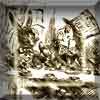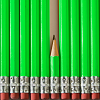Skip over navigation
The lengths of the sides of a triangle A are 3, 4, and 6.
Triangle B is similar to triangle A. One of the sides of triangle B has length 12.
What are the possible perimeters that triangle B could have?
This problem is taken from the World Mathematics Championships


Or search by topic
Number and algebra
Geometry and measure
Probability and statistics
Working mathematically
Advanced mathematics
For younger learners
Similar Perimeter
Age 14 to 16
ShortChallenge Level 





- Problem
- Solutions
The lengths of the sides of a triangle A are 3, 4, and 6.
Triangle B is similar to triangle A. One of the sides of triangle B has length 12.
What are the possible perimeters that triangle B could have?
This problem is taken from the World Mathematics Championships
You can find more short problems, arranged by curriculum topic, in our short problems collection.
You may also like
A Problem of Time
Consider a watch face which has identical hands and identical marks for the hours. It is opposite to a mirror. When is the time as read direct and in the mirror exactly the same between 6 and 7?

Back in Time
How many times a day does a 24 hour digital clock look the same when reflected in a horizontal line?

